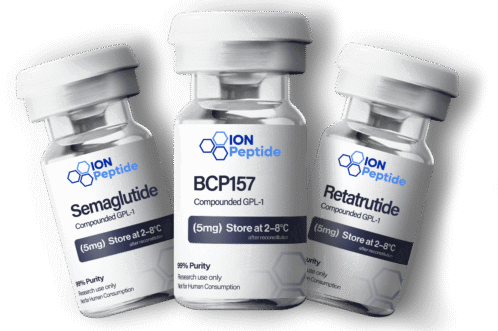Peptide Solubility
By Peptide Information
At IonPeptide.com, we believe that knowledge is power — especially when it comes to science. Our peptides are offered exclusively for in-vitro research purposes, giving scientists reliable tools to explore breakthroughs in medicine, biology, and biotechnology.
Important Notice: Our peptides are not approved for human or animal use, nor are they intended to diagnose, treat, or cure any disease. They are strictly for laboratory research and educational applications.
What Factors Determine Peptide Solubility?
Choosing the right solvent can sometimes be one of the trickiest parts of working with synthetic peptides. Many peptides dissolve easily in sterile water, but others — especially those with long chains of hydrophobic (water-repelling) amino acids — can be harder to work with.
A peptide’s solubility depends on the physical properties of its amino acids, which can be grouped into four categories: basic, acidic, polar uncharged, and non-polar.
Non-Polar (Hydrophobic) Amino Acids: These don’t dissolve well in water. Peptides containing many of them generally dissolve better in organic solvents like DMSO, propanol, isopropanol, methanol, or DMF.
Acidic Amino Acids: These peptides are best dissolved in basic solutions (e.g., ammonium hydroxide) — though this should not be used for peptides containing cysteine.
Basic Amino Acids: These are usually dissolved in acidic solvents, such as acetic acid solution.
Short Peptides (Fewer Than 5 Residues): These usually dissolve easily in water, so always try water first before moving to other solvents.
Understanding your peptide’s amino acid composition can save time, minimize trial-and-error, and help you achieve the correct solution quickly — ensuring your experiments start off right.
Peptide Solubility Guidelines
When working with synthetic peptides, it’s always best to test solubility with a small amount first. This helps avoid wasting material if the peptide doesn’t dissolve as expected.
Here are a few best practices:
Bring to Room Temperature: Allow peptides to reach room temperature before attempting to dissolve them.
Start with Sterile Water: Always try dissolving in sterile water first.
Try Removable Solvents: If water doesn’t work, try solvents that can later be removed through lyophilization (freeze-drying).
Restart If Needed: If the first attempt fails, lyophilization allows you to restart without losing or damaging the peptide.
Assist Dissolution Carefully: Use mild warming (below 40°C / 104°F) or sonication to help dissolve stubborn peptides. These methods won’t change the peptide’s inherent solubility but can speed up the process.
Following these steps helps ensure your peptide dissolves effectively without compromising its integrity.
Predicting Peptide Solubility Characteristics
You can often predict whether a peptide will be acidic, basic, or neutral — and therefore which solvent is best — by looking at its amino acid composition. Here’s a simple way to estimate:
Assign -1 to Acidic Amino Acids: These include Asp (D), Glu (E), and C-terminal COOH.
Assign +1 to Basic Amino Acids: These include Lys (K), Arg (R), and N-terminal NH₂.
Add +1 for Each Histidine (H): Count only those that would be charged at pH 6.
Calculate the Net Charge: Add up all the values to find the peptide’s overall net charge.
Knowing the net charge helps predict which type of solvent — acidic, basic, or neutral — will most likely dissolve the peptide successfully.
Dissolving the Peptide in Solution
Once you’ve calculated the peptide’s net charge, you can move on to dissolving it. Always start by trying sterile water first — if the peptide doesn’t dissolve, follow these guidelines:
Positively Charged Peptides: Use acetic acid solution (10–30%). If still unsuccessful, try trifluoroacetic acid (TFA) at <50 μl.
Negatively Charged Peptides: Use ammonium hydroxide (<50 μl). If the peptide contains cysteine, avoid ammonium hydroxide and instead add a small amount of DMF.
Neutral Peptides: Use organic solvents such as acetonitrile, methanol, or isopropanol. For highly hydrophobic peptides, try dissolving in a small amount of DMSO.
Note: Peptides with cysteine, methionine, or tryptophan are prone to oxidation in DMSO. If peptides form gels, add 6M guanidine•HCl or 8M urea to help them dissolve.
After the peptide is dissolved:
Dilute Carefully: Slowly add the solution to a buffered solution with gentle mixing to avoid localized concentration spikes.
Prepare Higher-Concentration Stocks: Make stock solutions stronger than the working concentration, then dilute further for assays.
Aliquot & Store Properly: Divide into smaller portions and store at –20°C (–4°F). For peptides containing cysteine, methionine, or tryptophan, store in an oxygen-free environment to prevent oxidation.
For best results, follow these steps to ensure your peptide is fully dissolved without compromising its stability or activit

